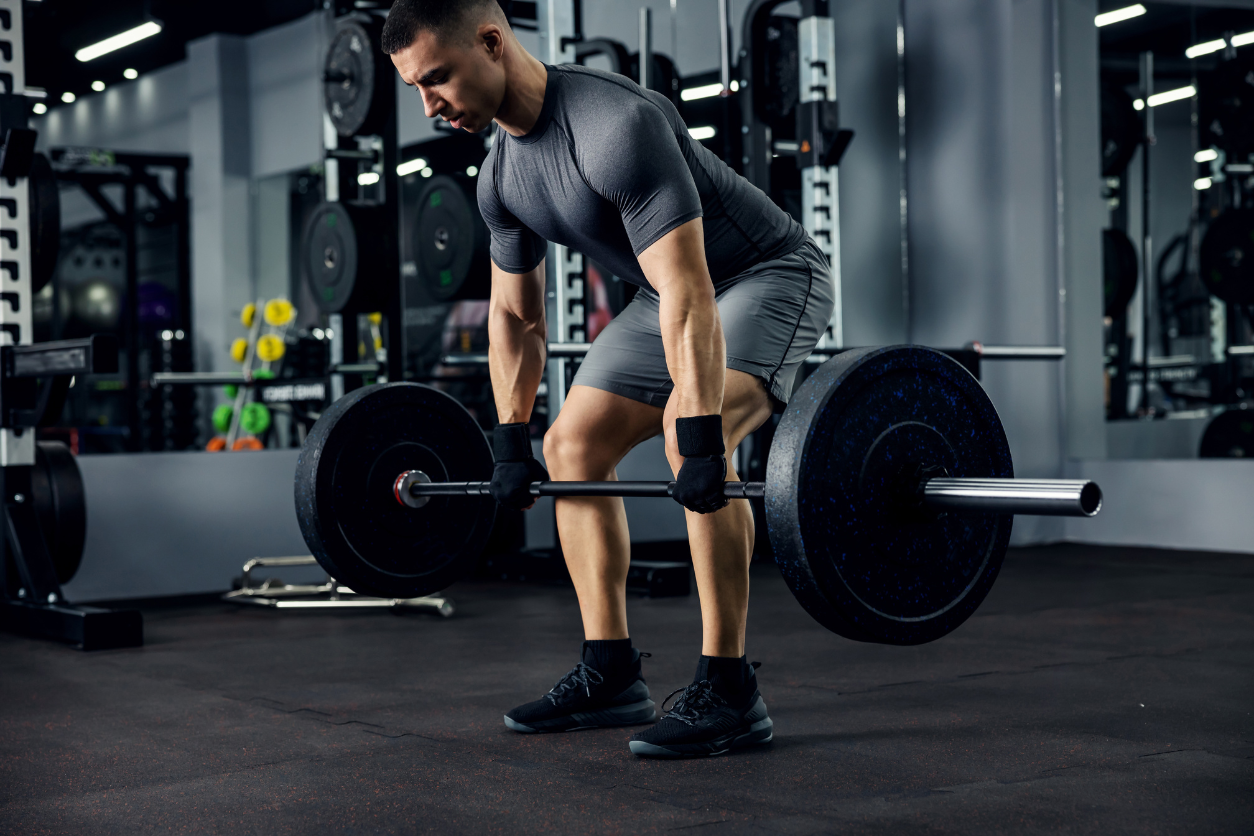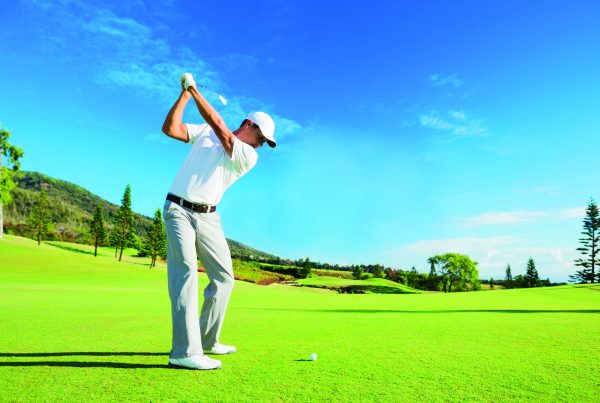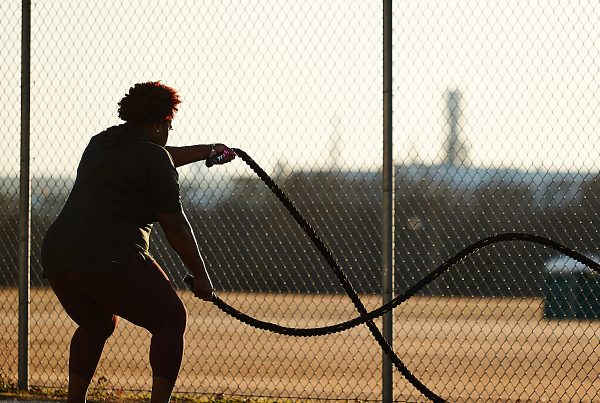Joel Brannigan, Dr Hayley Legg and Gilmour Stevenson from the world of sports performance and strength and conditioning share their thoughts on Olympic weightlifting (OWL) and how they utilise this training modality within their coaching practice.
What is your philosophy around the use of OWL specifically?
Joel Brannigan: Ultimately, I see it as one of the many tools available for physical development. At times in my coaching, it has been prevalent; at others, less so. Generally, time, outcomes and the ability of the individual drive this. I think, when coached well to individuals with some underlying physical potential, OWL can be beneficial on multiple levels, including intent, co-ordination, RFD etc. I do feel strongly that it’s a tool people should have at their disposal. However, I also feel there are other methods that have comparable motor unit recruitment and stimulus. As long as you have a robust rationale for your choice, you are good to go!
Hayley Legg: I think there is a time and a place for any lift. With OWL, I believe it is a sport first, and those movements can have a crossover and benefit for other sporting movements. My old philosophy would be to always include; however, as I’ve become more experienced, I can see added value and more efficient value elsewhere in my exercise selection.
Gilmour Stevenson: “Performance outcomes are the result of multi-muscle, multi-joint movements where muscles work in co-ordination with each other. Some lengthening, some shortening and others developing tension without changing length to provide stability. All this is conducted by the nervous system.” (Paraphrased from Supertraining by Mel C Siff.)
Strength is a skill. The Olympic Lifts demand not just the application of force but force applied with great velocity. They are velocity dependent. It is the rate at which force is applied (RFD) in weightlifting movements, together with other neuromuscular qualities, that make the skills of weightlifting transferable to the movement demands of most sports given the biomechanical similarities between them.
In addition, because the Olympic weightlifting movements are fun to do and skill based, they provide a motivational challenge to those who are performance orientated, as well as to those who are outcome orientated.
How quickly do you introduce OWL into an athlete’s programme?
JB: Relatively early on, certainly with derivative lifts. Once an individual has the component parts of bilateral and unilateral lifting, hinging, acceleration and deceleration of the body, they are fed in. Often, they will be introduced through warm-ups and ‘technical development’ sections of the session to aid the main outcomes.
HL: I love including OWL as early as possible, not necessarily to get adaptations but as a way to teach an athlete how to move their body and how to move a load. The lifts and derivatives are fun for youth and novice athletes; it’s easy for these athletes to feel when they are moving wrongly as the bar gives immediate feedback. For more established athletes, it comes down to their outcomes (sport) and training goals.
GS: Right at the beginning of the first session. The aim is to teach movements and to strengthen these movements. Functional muscular development will happen as a result.
Starting with a wooden dowel or broom handle, I teach snatch from the hip snatch first. Usually in the movement order of overhead squat, drop snatch, snatch pull from the hip, and snatch from the hip. Progression to a light bar is relatively quick for most.
Do you ever programme full Olympic lifts?
JB: I think I’ve programmed full lifts with only two athletes, both track and field. The key is having people with actual athletic (fibre type) profiles suitable to benefit from full lifts over simpler training options. Added to this, you need a lifter who understands the need for recovery and skill acquisition over one who merely wants to grind out a session.
HL: In terms of the clean and jerk and the snatch, no. To me these are the sport. I prefer the power and hang derivatives, as it removes the movement complexities and technical demands of dropping under the bar. I can get the strength and power adaptations from using derivatives without the risk of using a complex, sport-specific movement.
GS: Yes. However, normally the full clean and the jerk are separate in a session, as the compound movement is used where strength endurance is a principal aim of the mesocycle.
By alternating the derivative movements of both the clean and the snatch in different sessions within a micro-cycle and from meso-cycle to meso-cycle with the full lifts, I can provide variation and variety in the programme.
How long does it take athletes to be competent in OWL techniques?
JB: It depends. I’ve had people pick it up almost immediately; others, it’s taken a lot longer. I think to be executed well, with the appropriate load, intent, proficiency and skill, you’re looking for months/year rather than weeks. The barrier for most people is they are not just training OWL. They have multiple other sessions and qualities as well as technical training, so it takes longer.
HL: This depends on the athlete – both their movement competency and learning capacity. However, you can take most individuals from nothing to something that loosely resembles the OWL movements very quickly, often a single session. It’s too easy to get hung up on the techniques being perfected; for the majority, the movements are being used to generate a power adaptation, not to compete in weightlifting. With that in mind, competency can be described as moving effectively without putting yourself at risk of injury.
GS: They can be competent enough in some of the derivative movements from the beginning. The challenges are mostly about posture. However, the derivative movements can contribute to the development of good posture.
Are there some derivatives you don’t programme typically and why?
JB: I’ve used all derivatives over the years and they all have a role on two levels. One is to be able to develop and ‘spot check’ key phases of the lift. The other helps add variety and stimulus to an individual’s programme. I err on the clean derivatives over snatch simply as they tend not to be as contraindicated physically and invariably lift more.
HL: I don’t use any of the full catch derivatives or dropping derivatives (for example, snatch balance). As mentioned, I see better value elsewhere without putting the athlete in a high technical, and therefore higher risk, situation. The cost reward of getting the athlete competent in these lifts isn’t worth it for me.
GS: It depends on what is recognised as a ‘derivative’. If the ‘derivatives’ are defined as the phases of the lifts, I use all of these; for example, for the clean-start position, first pull, transition, second pull, catch, I use all of these as individual exercises. I also use combinations of these (e.g., clean pulls from the floor, the knee and mid-thigh).
However, if ‘derivatives’ are defined as other exercises that derive from the Olympic lifts, some of these are best avoided, for example, high pulls – while commonly used, I avoid this exercise for two main reasons. In my opinion, it is:
- detrimental to the development of the skill of the full movement
- contraindicated to the maintenance of heathy shoulders.
Also, with the bent over row – again, while this exercise is commonly used, it is difficult to see the point of it. If its purpose is arm pulling strength, better options can be found (rope climbing, pull-ups). If the purpose is back strength and posture, options are available that have the potential for greater loading (transition SLDL).
What are your ‘go to’ Olympic derivatives and why?
JB: I tend to be driven by simplicity and an ability to overload easily. The easier they are, the more an individual can overload: clean pull; power clean; heavy shrugs; hang clean; ‘drop catch’ variations; push press.
HL: I’m a fan of the power derivatives; I think the full catch positions are very technical and challenging for many. In my opinion, the full catch is OWL sport specific and requires more learning and technical proficiency; the time this takes outweighs the benefits, so I prefer the power catch. I also like a hang clean; it’s a great option for those who struggle to move the bar from the floor and who struggle to control the bar from the floor and end up rushing the movements.
GS: I go for:
- Overhead squat – full-body strength, postural stability, flexibility, balance, squatting technique
- Snatch and clean pulls from the hip/thigh – RFD, triple extension, landing mechanics when bar returned to start (injury avoidance)
- Overhead presses and jerks – all of above plus upper-body strength
- Transition SLDL – eccentric hamstring strength and back strength (injury avoidance)
- Back squat – “You can do anything you like to get strong legs and trunk as long as you back squat” (Mike Stone)
- Snatch and clean from hip/thigh – RFD, reactive strength, breaking forces, strength-skill
When do you use pulling-only derivatives and when do you emphasise catch derivatives?
JB: I rarely use catch derivatives. Given the end outcome, for many athletes I train there are better ways outside of OWL to develop eccentric qualities. Pulling specifically will figure in some capacity as it really allows individuals to develop powerful hip extensions with intent.
HL: It depends. We can load the pulling derivatives heavier as we don’t need to worry about the catch, so that gives a nice option when trying to get heavier power, more towards strength adaptation. Most athletes are familiar with seeing the catch and, in my experience, are able to be competent quicker than a high pull derivative. It can give a sense of accomplishment and an end target position to achieve with the bar. Athlete buy-in is a very important factor of a programme and a catch is excellent feedback and motivation.
GS: All the time. The ‘pulls’ are actually ‘pushes’. The triple extension is arguably the ‘magic’ of these lifts. It is biomechanically similar to movements in sport – running, jumping, throwing, kicking, hitting, etc. are both snatch and clean.
By varying the type of lift and the geography from where the ‘pull’ is, variation in loading as well as variety of movements can be achieved that are all aimed at improving speed in sports movements.
Catch derivatives are included right from the start (e.g., drop snatch, drop clean). Greater velocity is required to catch, thus developing the ability to apply more force more quickly. Catching also requires reactive speed and eccentric breaking forces. All of this is required in sports movements.
Do you use both snatch and clean derivatives/lifts or typically just one of them? Why?
JB: I like the snatch derivatives from a technical/speed POV but find in most they are limited by their scope, as people sometimes struggle with the mobility and co-ordination to do them to a level where there will be a tangible adaptation. As a result, clean variants can be loaded more and become the main direction of programming.
HL: My preference is the clean. Similar to other points, the snatch is much more technical and harder for people to complete safely. I will always opt for the power clean or clean pull derivatives; I very rarely utilise the snatch for training purposes.
GS: I use both, as well as overhead pushes and jerks. These provide variety and variation in movement and loading. It allows sessions to be designed on the theme of each and to alternate these within micro-cycles. The movement challenges of the snatch and its derivatives are, in my opinion, particularly valuable to the development of athleticism.

Dr Hayley Legg
Dr Hayley Legg is a senior lecturer in strength and conditioning at the University of Gloucestershire. She has been an accredited strength and conditioning coach for almost 20 years. She holds accreditation with both the UKSCA and NSCA. She has worked with elite athletes and is an advocate for using strength and conditioning practices to enhance people’s day-to-day lives.

Gilmour Stevenson
Gilmour (Gil) Stevenson is an Honorary Fellow, tutor and assessor for the UKSCA. He has over 30 years’ experience working within elite sport and is director of Sportspecifix Ltd, focusing on high-performance strength and conditioning coaching, and coach education. Gil has authored workshops on weightlifting for sport for organisations including the UKSCA, UK Athletics and the Scottish Rugby Union.

Joel Brannigan
Joel Brannigan is head of strength and conditioning for TASS. He has delivered workshops for the UKSCA since 2012 and is an assessor on the accreditation process. He has been involved in several UKSCA working groups on the subject of early years practitioner development. Joel is in the team that took the new UKSCA Trainer Award from its infancy to launch.
Explore more on developing athlete performance in this FitPro blog post







